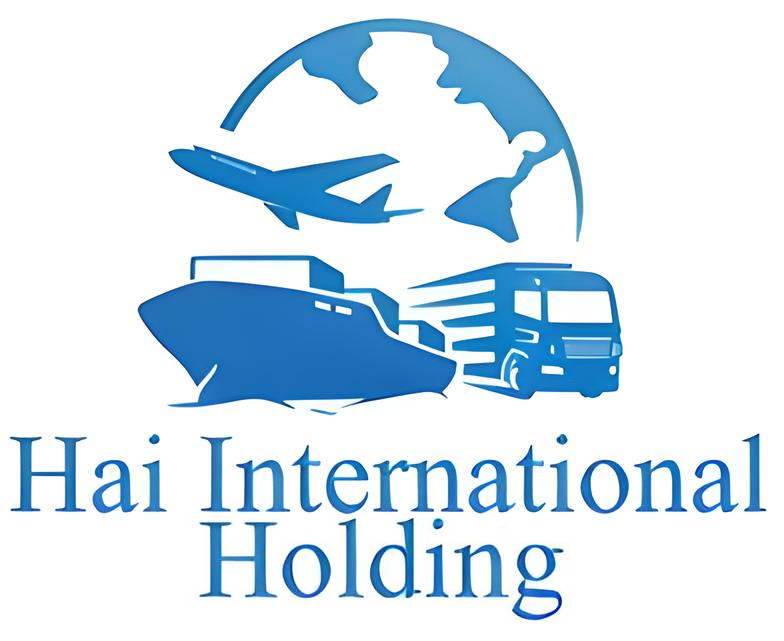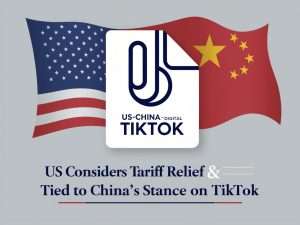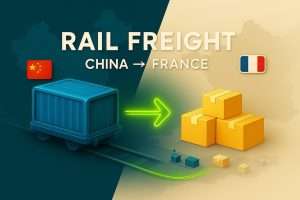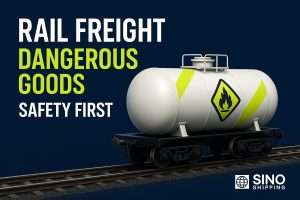If you want to boost your Amazon profits, sourcing from China is your secret weapon—thanks to unbeatable production costs and an incredible range of products. However, shipping from China to Amazon FBA comes with its own set of challenges, such as choosing the right shipping method, handling customs procedures, and meeting strict FBA requirements.
In this guide, we’ll walk you through 6 essential steps to streamline your process:
- Step 1: Select the optimal shipping method.
- Step 2: Partner with a reliable freight forwarder.
- Step 3: Calculate your costs accurately.
- Step 4: Prepare your products to meet FBA guidelines.
- Step 5: Navigate customs clearance smoothly.
- Step 6: Deliver your goods to the correct Amazon fulfillment center.
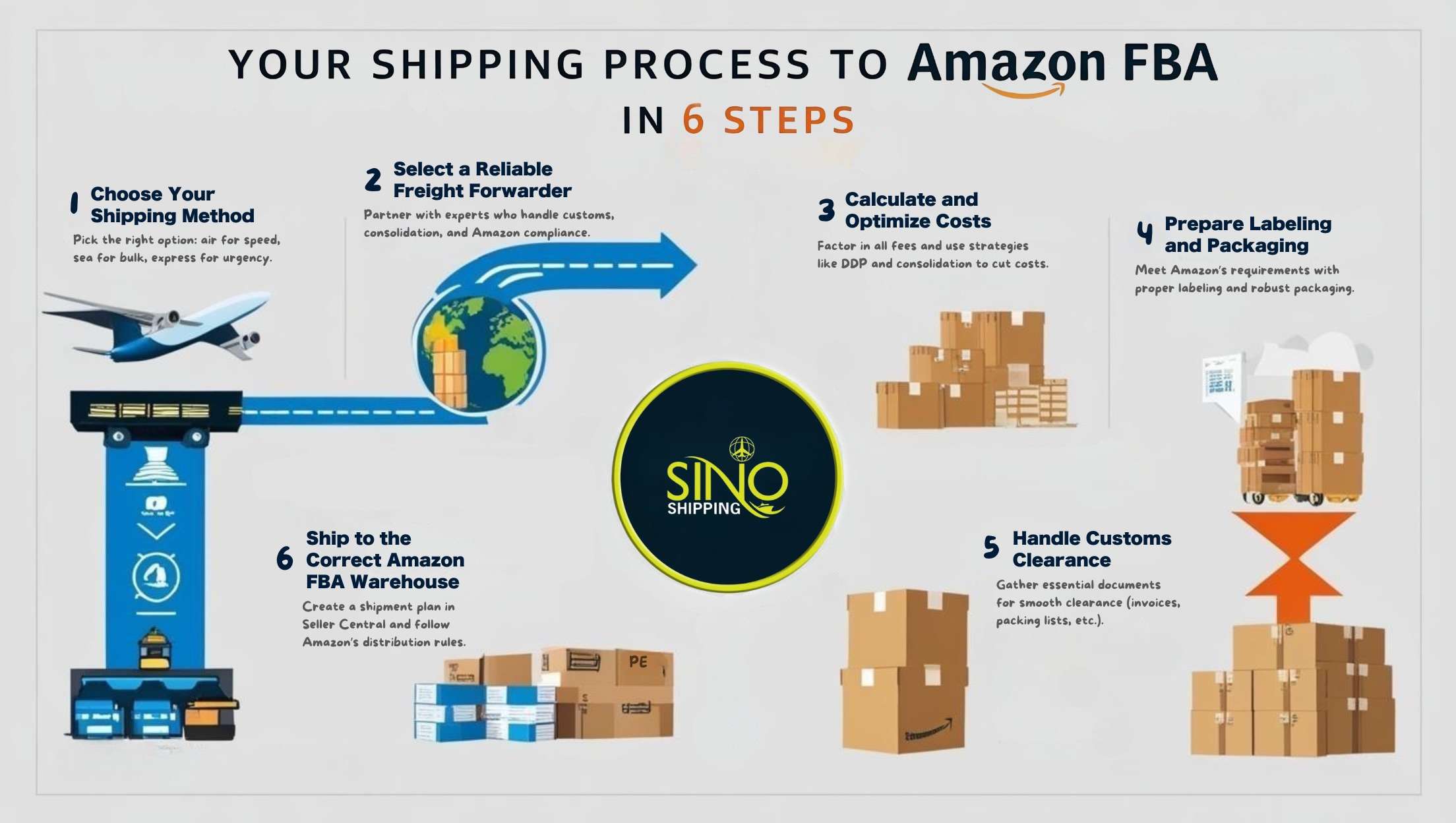
Ready to transform your logistics and maximize your sales? Let’s dive in.
Step 1 – Choose the Right Shipping Method from China to Amazon FBA
Your shipping method lays the foundation for a smooth Amazon FBA experience. It can be the difference between swift restocking and frustrating delays, impacting both your bottom line and customer satisfaction. Let’s break down your options with a mix of narrative insights and a quick-reference table.
Comparing Shipping Options
When choosing a method, consider your shipment size, urgency, and budget. Here’s a quick comparison:
| Shipping Method | Transit Time | Ideal For | Key Benefit |
|---|---|---|---|
| Air Freight | 5–10 days | 100kg – 500kg | Quick turnaround with moderate cost |
| Sea Freight | 25–40 days | Bulk orders (>500kg) | Highly cost-effective for large volumes |
| Express Courier | 3–7 days | Small, high-value products | Fastest delivery, perfect for urgent restocks |
Air freight strikes a balance between speed and cost, making it a favorite for moderate shipments. Sea freight, while slower, offers significant savings on bulk orders, and express couriers like DHL, FedEx, or UPS are invaluable when speed is paramount for small, high-value items.
Navigating DDP vs. DDU
Understanding your shipping terms is essential to avoid customs hassles:
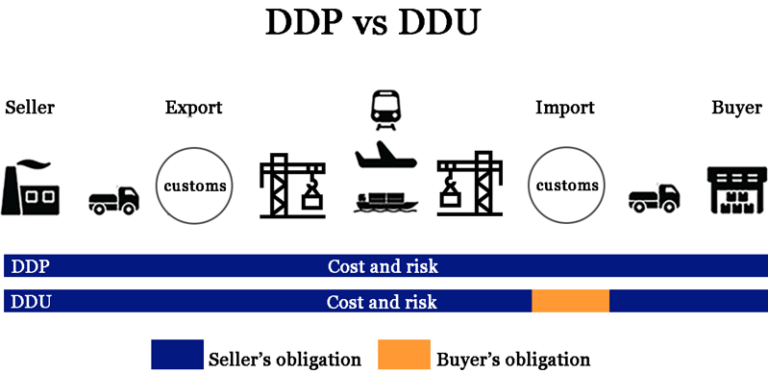
- DDP (Delivered Duty Paid):
All customs duties and taxes are prepaid. This method minimizes the risk of delays at customs, ensuring a hassle-free delivery—a clear win for Amazon FBA shipments. - DDU (Delivered Duty Unpaid):
With DDU, you’re responsible for handling import duties upon arrival, which can introduce unexpected delays and extra administrative tasks. For most sellers, the predictability of DDP outweighs any potential cost savings from DDU.
Choosing Amazon-Preferred Carriers
Working with carriers that know the ins and outs of Amazon’s requirements can simplify your logistics significantly:
- For Small Shipments:
Major carriers like UPS, DHL, and FedEx are trusted for their reliability and speed. Their efficient service is crucial when every day counts. - For Bulk Orders:
Freight forwarders specializing in Amazon FBA logistics add immense value. They offer services such as shipment consolidation and streamlined customs clearance, ensuring that your large orders are managed with expert care.
By weighing these options carefully—whether deciding between air, sea, or express shipping and choosing the best terms (DDP vs. DDU)—you set the stage for a seamless shipping process from China to Amazon FBA. This thoughtful approach not only optimizes your logistics but also enhances your overall business efficiency and customer satisfaction.
Step 2 – Work With a Reliable Freight Forwarder for Amazon FBA
Partnering with a dependable freight forwarder is crucial to transforming the often-complicated process of shipping to Amazon FBA into a streamlined, hassle-free experience. A seasoned freight forwarder doesn’t just move your goods—they manage customs clearance, ensure compliance with Amazon’s stringent guidelines, and consolidate shipments to reduce your overall costs. Here’s how to find the right partner and why it matters.

Why You Need a Freight Forwarder
A professional freight forwarder serves as your logistics ally, taking care of the nitty-gritty so you can focus on scaling your business. Consider these key benefits:
- Effortless Customs Clearance:
They handle all the paperwork, duties, and taxes, ensuring your shipments move through customs smoothly and without delays. - Amazon Inbound Compliance:
With deep knowledge of Amazon’s inbound shipment rules, they ensure your packages meet every requirement, reducing the risk of costly errors or rejections. - Cost-Efficient Shipment Consolidation:
By bundling multiple orders, they help lower your per-unit shipping cost, making bulk shipping more economical.
How to Choose a Freight Forwarder for FBA Shipping
When evaluating potential partners, look for these critical qualifications:
- Expertise in Amazon FBA Logistics:
Choose a forwarder with a proven track record in handling FBA shipments. Their experience can mean the difference between smooth operations and unexpected headaches. - Offers DDP Shipping Solutions:
A forwarder that provides Delivered Duty Paid (DDP) services ensures that all customs duties and taxes are prepaid. This minimizes delays at customs, keeping your shipments on schedule. - Warehouse Prep Services in China:
A partner who offers additional services like packaging, labeling, and quality inspections can help ensure your products are FBA-ready right from the source. - Capability to Ship to Multiple Amazon Warehouses:
As Amazon may require shipments to be split among different fulfillment centers, your freight forwarder should be able to manage multi-warehouse deliveries seamlessly.
Pro Tip:
Working with a China-based FBA freight forwarder can offer significant savings on local consolidation and inspection fees, making your overall shipping process more cost-effective.
By carefully selecting a freight forwarder that meets these criteria, you’ll build a robust logistics foundation that keeps your operations efficient and compliant with Amazon’s standards. This strategic move not only simplifies your shipping process but also enhances customer satisfaction and supports your business growth.
Step 3 – Calculate Costs & Avoid Hidden Fees
Understanding and managing your shipping costs is a critical component of running a profitable Amazon FBA business. Shipping from China can involve various fees that, if not anticipated, can quickly eat into your margins. By breaking down these costs and employing smart strategies, you can keep your expenses in check and ensure you’re getting the best deal possible.
Key Cost Factors When Shipping from China to Amazon
When calculating Amazon FBA shipping costs, it’s important to consider all the elements that contribute to your total expense:
- Freight Costs:
Whether you opt for air, sea, or express shipping, freight costs form the bulk of your shipping expense. Each mode has its own pricing structure based on weight, volume, and transit time. - Customs Duties & Import Taxes:
These fees are charged by the destination country and can vary widely depending on the product category and declared value. - Amazon FBA Receiving Fees:
Once your products arrive at Amazon’s fulfillment centers, there are additional fees for handling and processing your shipments. - Inspection & Labeling Fees:
To meet Amazon’s strict requirements, your products might need professional inspections and labeling services before they are sent to the warehouse.
How to Reduce Shipping Costs
Minimizing costs while avoiding hidden fees is not only about cutting expenses but also about strategic planning. Here are some actionable tips:
✔ Use DDP Shipping:
Opting for Delivered Duty Paid (DDP) shipping means all customs duties and taxes are included in your shipping cost. This approach prevents unexpected fees at customs and ensures a smoother delivery process.
✔ Consolidate Shipments:
Combining multiple orders into a single shipment can reduce your per-unit freight cost. Consolidation minimizes handling fees and can lead to better rates with freight forwarders.
✔ Plan Ahead:
Avoid the rush by planning your shipments well in advance. This foresight can help you steer clear of expensive express shipping fees and negotiate better rates for air or sea freight.
By carefully calculating your Amazon FBA shipping costs and implementing these strategies, you can unlock opportunities for cheap shipping to Amazon FBA without compromising on speed or quality. This proactive approach not only saves money but also improves the overall efficiency of your logistics, leaving you free to focus on growing your business.
Step 4 – Amazon FBA Labeling & Packaging Requirements
Ensuring your products meet Amazon’s strict labeling and packaging requirements is essential for a smooth FBA process. Not only does it prevent costly rejections and delays, but it also guarantees that your inventory is properly received and processed. Below, you’ll find a comprehensive guide on how to navigate these requirements while avoiding common pitfalls.
Amazon FBA Labeling Rules
Accurate labeling is critical for Amazon to correctly track and manage your inventory. Your labeling process should include:
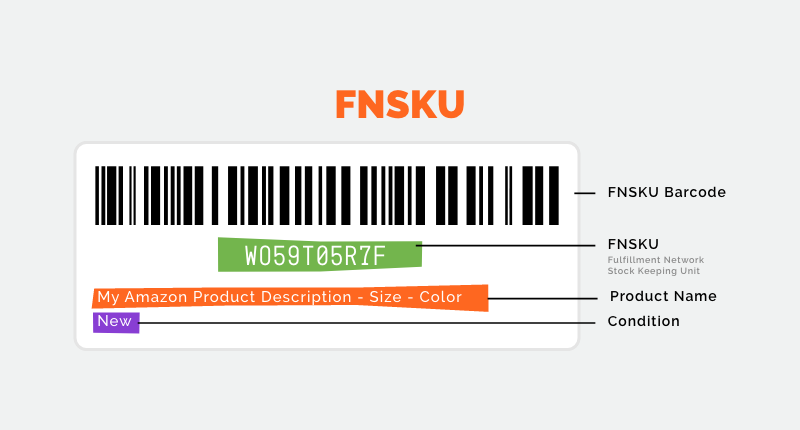
- FNSKU Labels:
These are Amazon-specific barcodes that uniquely identify your products. Every unit must have a scannable FNSKU to ensure seamless processing at the fulfillment center. - Carton Labels:
Each shipping carton must display a unique label. This helps Amazon quickly verify the contents during the receiving process. - Pallet Labels:
If you’re shipping by pallet, make sure each pallet is labeled correctly to streamline the handling and unloading process.
Packaging Guidelines for Amazon FBA
Proper packaging protects your products during transit and ensures they meet Amazon’s standards. Here are some essential guidelines:
- Use strong, double-wall cartons:
This adds an extra layer of protection against rough handling and transit damage. - Weight limits:
Ensure that each carton does not exceed 22kg (except for oversized items), which helps prevent issues during handling. - Box size limits:
Adhere strictly to Amazon’s box size requirements to avoid rejection at the fulfillment center.
Common Mistakes That Cause FBA Rejections
Even small errors in labeling or packaging can result in rejected shipments. Avoid these common mistakes:
- Missing or incorrect FNSKU labels:
Failing to apply the correct FNSKU or omitting them altogether can lead to inventory mismatches and delays. - Overweight or oversized cartons:
Exceeding weight or size restrictions increases the risk of damage and rejection by Amazon. - Lack of a shipment plan in Seller Central:
Not creating or following a detailed shipment plan can cause logistical hiccups, resulting in additional fees and delays.
By following this Amazon FBA labeling guide and understanding how to package products for Amazon FBA properly, you can significantly reduce the risk of shipment rejections and ensure your products are ready for prime time. Taking the time to get labeling and packaging right not only improves your operational efficiency but also enhances the overall customer experience.
Step 5 – Customs Clearance & Import Regulations
Navigating customs clearance and import regulations is a critical step when shipping products from China to Amazon FBA. A well-prepared shipment helps you avoid delays, unexpected fees, and ensures your inventory reaches Amazon’s fulfillment centers on schedule. Here’s what you need to have in order to streamline Amazon FBA customs clearance and facilitate smooth importing from China.
Documents Required for Shipping from China to Amazon FBA
Before your shipment can clear customs, you must prepare the necessary documents:
- Commercial Invoice:
A detailed document outlining your product description and declared value, crucial for accurate customs assessments. - Packing List:
Provides essential product details including dimensions, weight, and quantity, helping customs officials verify your shipment. - Bill of Lading (BOL) or Airway Bill:
Acts as the contract between you and the carrier, specifying shipping terms and the route for your goods. - Importer of Record (IOR) Information:
Identifies the party responsible for ensuring compliance with import regulations and handling any associated duties.
Pro Tip
Always work with a freight forwarder that offers DDP (Delivered Duty Paid) shipping. This approach pre-pays all customs duties and taxes, significantly reducing the risk of delays during Amazon FBA customs clearance and simplifying the process of importing from China to Amazon FBA.
By ensuring you have the right documents and partnering with experienced professionals, you can make customs clearance a seamless part of your shipping process, ensuring your products arrive at Amazon FBA efficiently and without hassle.
Step 6 – Ship to the Correct Amazon FBA Warehouse
Once your products are prepped and ready, the final step is ensuring they arrive at the right Amazon FBA warehouse. This step is critical because a smooth transition into Amazon’s fulfillment network helps maintain inventory accuracy and timely order processing. Let’s walk through the process of creating a shipment plan in Amazon Seller Central and review key warehousing rules.
How to Create a Shipment Plan in Amazon Seller Central
Start by logging into your Amazon Seller Central account and follow these steps:
- Navigate to Inventory > Send to Amazon:
This section is designed to help you initiate your shipment plan and provides a step-by-step interface. - Select Your Shipping Method:
Choose whether you’re shipping via air, sea, or express. Your selection will depend on your budget, order size, and urgency. - Enter Box Dimensions & Weight:
Accurate measurements are essential for calculating shipping costs and ensuring compliance with Amazon’s guidelines. - Print and Attach Amazon Shipment Labels:
Each box must be labeled correctly to facilitate a smooth receiving process at the fulfillment center. - Choose a Freight Forwarder or Carrier:
Select a partner who specializes in Amazon FBA shipments to handle the logistics and ensure your inventory is delivered as planned.
Amazon FBA Warehousing Rules
Amazon’s warehousing system is designed to streamline the process, but there are a few rules to keep in mind:
- Automatic Fulfillment Center Assignment:
Amazon will assign the appropriate fulfillment center for your inventory based on your shipment plan. - Split Shipments May Be Required:
Depending on your order and Amazon’s internal logistics, you may need to send your products to multiple warehouses. This ensures faster processing and distribution across regions. - Utilize 3PL Warehouses:
If needed, you can store and prep inventory at a third-party logistics (3PL) warehouse before it’s shipped to Amazon. This can be particularly helpful for managing large volumes or coordinating complex shipments.
By following these steps on how to send inventory to Amazon and understanding the warehousing rules, you’ll be well-equipped to ship to an Amazon FBA warehouse smoothly and efficiently. This strategic approach not only minimizes delays and errors but also supports a robust fulfillment process that ultimately enhances customer satisfaction and boosts your business success.
Final Thoughts: Your Roadmap to Amazon FBA Shipping Success
Shipping from China to Amazon FBA doesn’t have to be a headache when you follow these 6 essential steps:
- Choose the Right Shipping Method:
Determine whether air, sea, or express shipping best fits your shipment size, urgency, and budget. - Work With a Reliable Freight Forwarder:
Partner with experts in Amazon FBA logistics who can handle customs clearance, documentation, and shipment consolidation. - Calculate Costs & Avoid Hidden Fees:
Factor in freight charges, customs duties, FBA receiving fees, and additional costs, then strategize to minimize these expenses. - Adhere to Amazon FBA Labeling & Packaging Requirements:
Ensure your products meet all FNSKU, carton, and pallet labeling guidelines, and follow packaging rules to avoid rejections. - Navigate Customs Clearance & Import Regulations:
Prepare all required documents and work with a forwarder offering DDP shipping to bypass delays. - Ship to the Correct Amazon FBA Warehouse:
Create an accurate shipment plan in Seller Central and adhere to Amazon’s warehouse assignment rules.
Final Tip:
Always choose a freight forwarder that specializes in FBA. Their expertise can save you time, money, and stress by ensuring a seamless shipping process.
Next Steps:
Reach out and get a quote from a China-based FBA shipping expert today.
Shipping Success Q&A: Answers to Your Top Amazon FBA Questions
What is the cheapest shipping method from China to Amazon FBA?
A: For bulk shipments, sea freight is generally the most cost-effective option. Although the transit time is longer—typically around 25 to 40 days—it offers substantial savings when you are shipping large volumes. In contrast, for smaller or time-sensitive shipments, air freight or express courier services may be a better choice despite their higher costs.
How long does shipping from China to Amazon FBA usually take?
Transit times vary depending on the chosen shipping method. Air freight typically takes between 5 and 10 days, sea freight generally requires 25 to 40 days, and express couriers can deliver within 3 to 7 days. The right option for you depends on the urgency of your shipment and your budget constraints.
Do I really need a freight forwarder for Amazon FBA shipments?
Although it is possible to manage shipping independently, partnering with a freight forwarder—especially one experienced in Amazon FBA logistics—can simplify the entire process. They manage customs clearance, ensure compliance with Amazon’s guidelines, and can consolidate shipments to reduce costs, ultimately saving you time and preventing potential delays.
What documents are required for customs clearance when shipping from China?
Typically, you will need a commercial invoice that details the product description and declared value, a packing list that outlines product dimensions, weight, and quantity, and either a Bill of Lading or an Airway Bill to serve as the shipping contract. Additionally, you must provide Importer of Record information to comply with local import regulations.
What happens if my shipment doesn’t meet Amazon’s labeling or packaging requirements?
Failure to comply with Amazon’s strict labeling and packaging requirements can lead to shipment rejections, delays, and additional fees. Such non-compliance may cause significant disruptions to your inventory management and order processing. Therefore, it is essential to adhere to Amazon’s guidelines to ensure a smooth fulfillment process.
Can my shipment be split between multiple Amazon warehouses?
Yes, Amazon may assign your inventory to multiple fulfillment centers based on regional demand and logistical considerations. When you create your shipment plan in Amazon Seller Central, be prepared for the possibility of split shipments, which can help ensure that your products are distributed more efficiently across the network.
